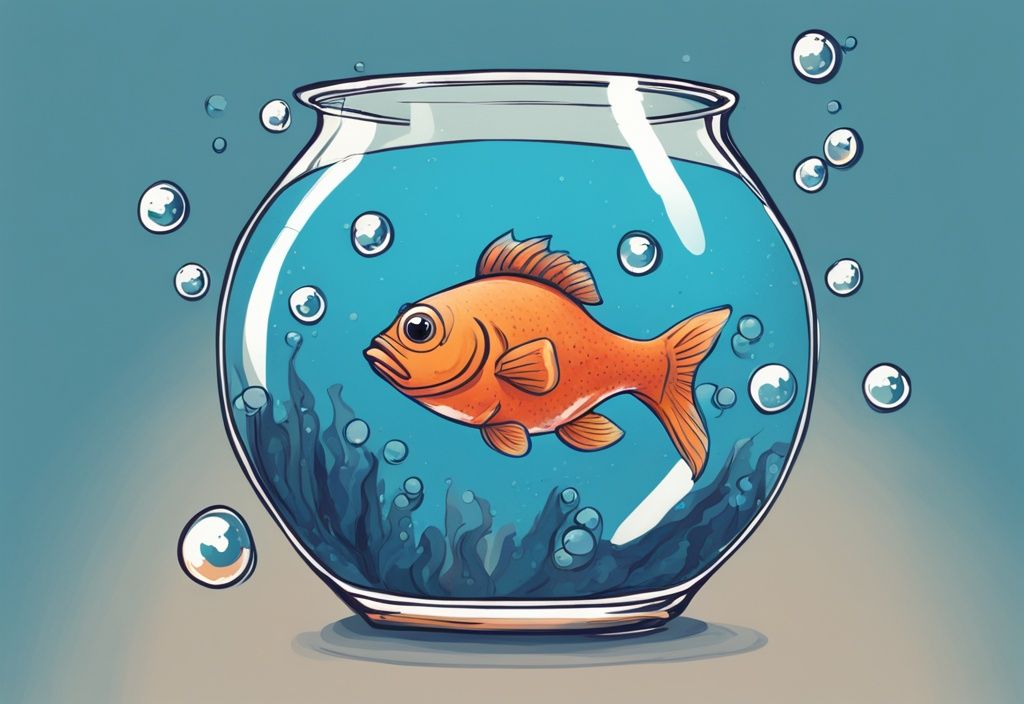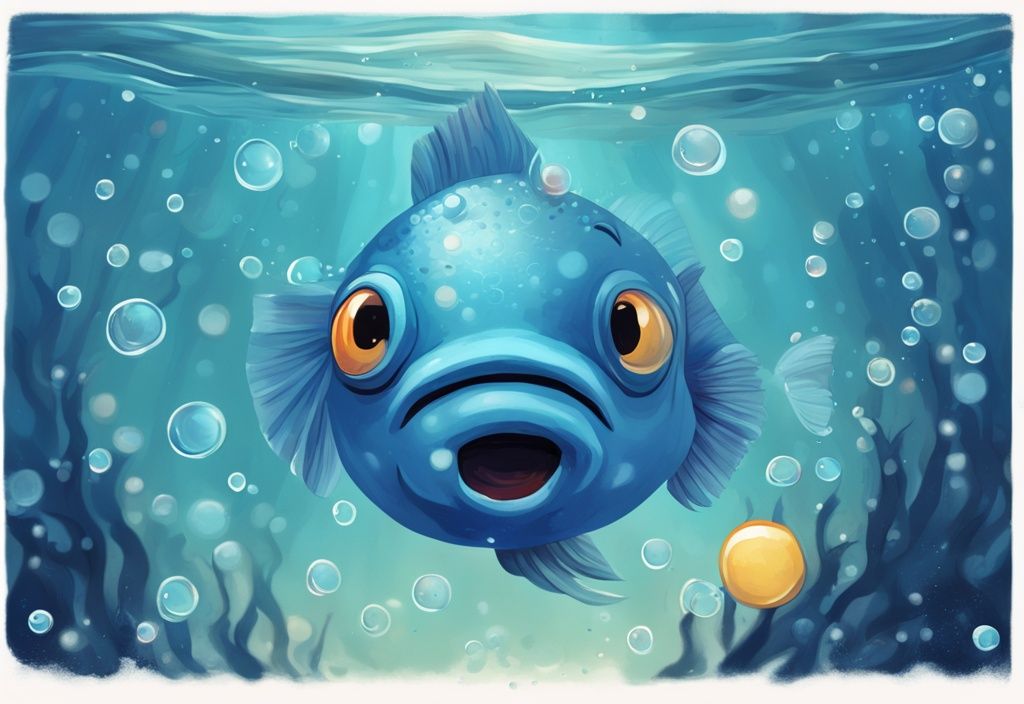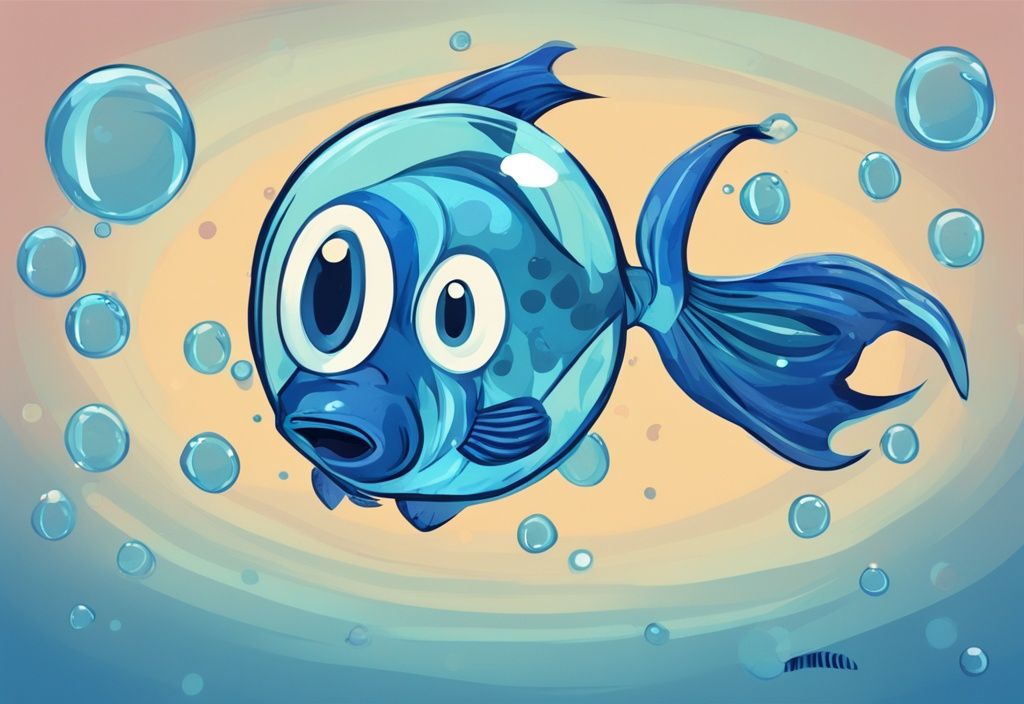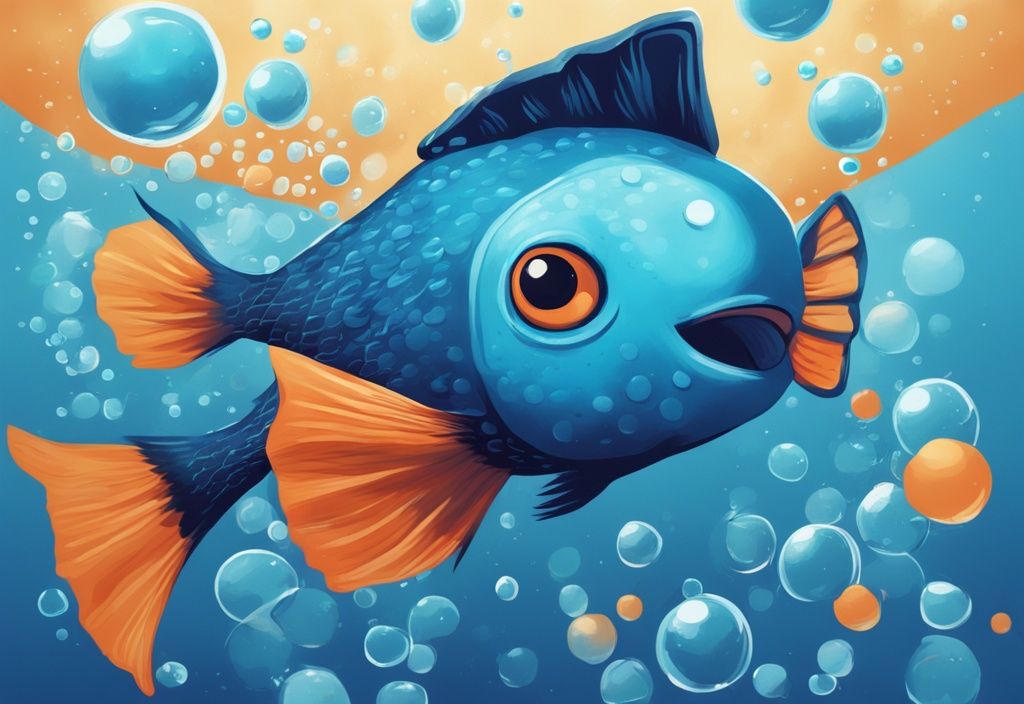Ever pondered the question, “Can fish drown?” It’s a head-scratcher, isn’t it? As someone who’s spent countless hours by the water, I can tell you it’s more than just a quirky thought. Fish, our slippery companions, can indeed face a situation akin to drowning. This flips the script on the idea that they’re immune to oxygen woes. Knowing how fish breathe and what happens when their watery world runs low on oxygen is key for anyone who loves the splash of a tail or the glint of a fin. So, let’s dive in, unravel this mystery, and ensure our finned friends are always in the clear.
Understanding the Concept of Fish “Drowning”
Ever wondered if fish can drown? It’s a curious thought, isn’t it? Let’s dive into what this really means for our finned friends.
What Does It Mean for Fish to “Drown”?
Now, when we talk about fish “drowning,” we’re not talking about them inhaling water like we might imagine. Instead, it’s more about suffocation from a lack of oxygen. Fish breathe by extracting dissolved oxygen from water through their gills. If the oxygen levels in the water drop too low, fish can suffocate. This is what folks often refer to as “drowning,” though it’s quite different from how we humans experience it.
Picture this: you’re out on the lake, and the water is calm. You’d think everything’s perfect for the fish below, but if that water doesn’t have enough oxygen, it’s a real struggle for them. It’s a bit like us trying to breathe in a stuffy room with no fresh air.
Differences Between Drowning and Suffocation in Fish
Let’s clear up the confusion between drowning and suffocation for fish. Drowning, as we know it, involves inhaling water, but fish don’t do that. Instead, they face suffocation when they can’t get enough oxygen from their watery home. This can happen if the oxygen levels are low or if their gills are damaged.
Imagine this scenario: you catch a fish, and it’s out of the water. Its gills collapse, and it can’t breathe air like we do. That’s suffocation, plain and simple. It’s a stark reminder of the unique challenges fish face, quite different from us land-dwellers.
So next time you’re out fishing, take a moment to appreciate the delicate balance of nature and the challenges our aquatic companions face. It’s all part of the adventure, isn’t it?
How Fish Breathe: The Crucial Role of Gills
Ever wondered how fish manage to breathe underwater? It’s all about those fascinating gills. These remarkable organs allow fish to extract oxygen from water, a skill that’s absolutely essential for their survival. If you’re curious to learn more about the diverse species inhabiting the region, check out our guide on what fish are in Lake Michigan. Unlike us land-dwellers who rely on lungs, fish have mastered the art of underwater breathing. As water glides over their gills, tiny blood vessels, or capillaries, get to work, soaking up the oxygen. It’s a nifty system that lets fish flourish in all sorts of aquatic environments, even when the oxygen levels are playing hard to get.
Mechanism of Oxygen Extraction in Fish
Now, let’s dive a bit deeper. Some fish, like sharks and tuna, have taken things up a notch. They’ve evolved to keep on swimming, almost like they’re in a never-ending marathon. Why, you ask? This constant motion ensures water is always flowing over their gills, maximizing their oxygen intake. If they stopped, they’d find it pretty tough to breathe, underscoring just how vital those gills are.

But here’s the kicker—gills are delicate. They can easily get damaged by disease or fishing gear. And when that happens, a fish’s ability to breathe takes a hit, leading to suffocation. It’s a reminder of how crucial it is to handle fish with care, whether you’re out on the water or just learning about these incredible creatures.
Can Low Oxygen Levels in Water Cause Fish to “Drown”?
Imagine you’re out on the lake, casting your line as the sun rises, and you start pondering the mysteries beneath the surface. One question that might reel in your curiosity is whether fish can actually “drown.” While fish don’t drown in the way we humans do, they can face a grim fate when oxygen levels in the water plummet. Let’s dive into what causes these low oxygen levels and how they impact our finned friends.
Causes of Low Oxygen Levels in Water
Several factors can turn a serene fishing spot into a suffocating environment for fish. Pollution is a notorious troublemaker, sneaking in harmful substances that gobble up oxygen. Ever notice how hot summer days make you feel sluggish? Well, high temperatures have a similar effect on water, reducing oxygen solubility and putting fish in a tight spot.
Overpopulation in a pond or lake is like a crowded party with not enough snacks—everyone’s fighting for the same limited resources. And then there are those pesky plankton blooms. When plankton populations explode, they create “dead zones” by hogging oxygen, often fueled by nutrient runoff from farms and cities. To top it off, sulfides from marine sediment can make matters worse, turning the water into a hostile place for fish.
Impact of Low Oxygen Levels on Fish
Low oxygen levels, or hypoxia, are no laughing matter for fish. They depend on dissolved oxygen to breathe, and when it’s scarce, their survival is at risk. Imagine trying to run a marathon with a paper bag over your head—fish face a similar struggle in low-oxygen waters. This can stunt their growth and reproduction, as they can’t get the oxygen they need for their metabolic processes.
High temperatures crank up the heat on this issue. They boost fish metabolic rates, increasing their oxygen demand just when it’s hardest to come by. This double whammy can lead to stress and, in some cases, mass die-offs known as fish kills. It’s a tragic sight for any angler, as entire aquatic populations can be wiped out, leaving the ecosystem in disarray.
How Fish Adapt to Low Oxygen Environments
Ever wondered how fish manage to survive in waters where oxygen seems as scarce as a fish in the Sahara? Let’s dive into the fascinating world of fish adaptations that keep them from “drowning” in low-oxygen environments. From physical tweaks to clever behaviors, fish have some tricks up their fins that are sure to impress even the most seasoned angler.

Species with Enhanced Oxygen Extraction Abilities
Some fish have evolved with the finesse of a ballet dancer, gracefully adapting to low-oxygen settings. Tropical species, for instance, have developed an impressive toolkit to extract every last bubble of oxygen from the water. Picture this: increased gill surface area and turbocharged blood circulation. It’s like having a high-performance engine under the hood, ensuring they can breathe easy even when the going gets tough.
And then there are the lungfish. These guys are the ultimate hybrid, equipped with lungs that let them gulp air when water oxygen levels are low. Talk about a survival strategy! It’s a reminder of just how diverse and ingenious fish can be in their quest to avoid suffocation.
Behavioral Adaptations: Migration and Movement
When the going gets tough, the tough get going—or swimming, in this case. Fish aren’t just passive residents of their watery homes; they’re active navigators. Migration is their go-to move, heading for cooler, oxygen-rich waters when things heat up. It’s a bit like us seeking shade on a scorching day.
Some species, like eels, take it a step further. They’ve mastered the art of breathing through their skin, allowing them to survive on land when necessary. Imagine that! It’s a handy trick during low tide or when their watery abode dries up.
And as our planet warms, fish might shrink a bit, possibly due to oxygen constraints. But don’t count them out—they’re resilient and resourceful, always finding ways to adapt. It’s a testament to their survival skills and a reminder of the wonders of nature.
Preventing Fish from “Drowning” in Aquariums
Creating a safe and thriving environment for your aquatic friends is key. Let’s dive into how you can prevent your fish from “drowning” in their watery home.
Maintaining Proper Water Conditions
Imagine taking a deep breath, only to find the air isn’t quite right. That’s what fish experience when water conditions aren’t up to par. Regularly checking water quality is like giving your fish a breath of fresh air. Hypoxia, or low oxygen levels, can sneak up on you if you’re not careful. Keeping the water clean and oxygen-rich is vital for their well-being. Avoid pollutants like the plague, and keep an eagle eye on the temperature—those sneaky fluctuations can mess with oxygen levels. By staying on top of these factors, you’re not just maintaining an aquarium; you’re crafting a paradise for your finned companions.
Importance of Aeration and Avoiding Overpopulation
Think of aeration as the gentle breeze that keeps everything fresh. Devices like air pumps and filters are your best friends here, ensuring the water is swirling with life-giving oxygen. It’s like mimicking a river’s natural flow, right in your living room. But here’s a tip from the trenches: don’t overcrowd your tank. Too many fish can turn your aquarium into a bustling city with too few resources. Keep the population in check to avoid a scramble for oxygen. Balance is key, and with a well-managed tank, you’re setting the stage for a vibrant underwater community. Your fish will thank you with their lively dances and shimmering scales.
FAQ
Ever wonder if fish can actually drown? It’s a curious question that often pops up when we think about our underwater friends. Let’s dive into some common queries about fish and their watery world.

- Can fish actually drown like humans do?
- Well, fish don’t drown in the same way we do, but they can suffocate if the water lacks enough oxygen. Imagine being in a room with no air—it’s a bit like that for them.
- What are the signs of low oxygen levels in water for fish?
- Picture this: your fish are gasping at the surface, looking sluggish, and not showing much interest in food. These are tell-tale signs they’re struggling for oxygen.
- How can I ensure my aquarium fish have enough oxygen?
- Keep the water bubbling with proper aeration, ensure it’s clean, and avoid cramming too many fish together. It’s like giving them a breath of fresh air.
- Are there fish that can survive out of water?
- Believe it or not, some fish like lungfish and eels have special tricks up their sleeves. They can survive out of water for a while thanks to unique adaptations.


